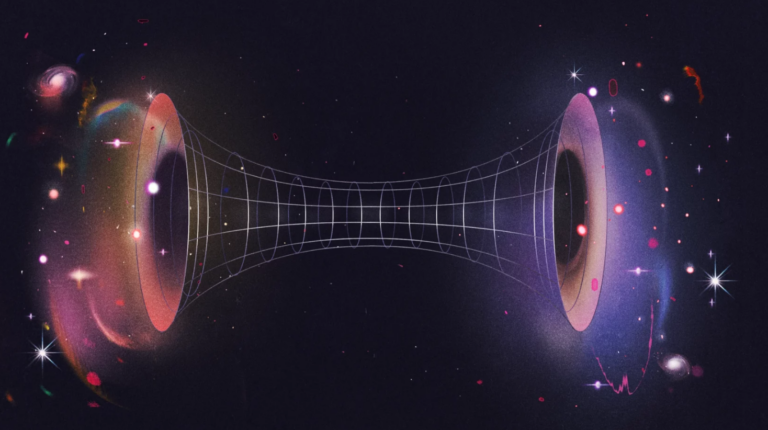Cambridge Physicists Uncover New Evidence Supporting Wormhole Existence
Authors of this paper explain that if wormholes are real, they are shortcuts through space-time and, therefore, could be used for faster-than-light communication using light impulse. What makes wormholes a popular subject in the scientific literature is that the throat of the wormhole is understood to be collapsing too rapidly for anything to traverse it; however, new mathematical estimations suggest that if the throat is significantly longer than the opening of the wormhole, negative Casimir energy be naturally produced.
This much may only be enough to momentarily halt the destruction so that light may go through creating a chance of transmitting messages through the timestream. However, the negativity would not be sufficient to fully stabilize the system and thus, additional works have to be conducted to find out if constructive interaction is possible.
Long whip like wormholes could serve as basically optical wires through which messages may well be sent through light pulses from one point in time to another.
Wormholes are a part of the general relativity theory proposed by Albert Einstein; wormholes are tunnels connecting two points in spacetime. It was interesting to understand that if anything could cross these structures, it could potentially develop amazing opportunities, for instance, the ability to travel in time and make instantaneous communications.
However, there’s a major obstacle: The wormholes that Einstein announced are in fact destabilized and hence collapse almost instantly making it impossible for any objects to cross them. In 1988 Kip Thorne and his coworkers at the California Institute of Technology suggested that one might use a type of negative energy called Casimir energy to stabilize a wormhole.
Consequently, as indicated by the quantum mechanics theories, space-time vacuum is full of activity, whereby energies are formed in the form of waves that are random in nature. If two metal plates are arranged parallel to each other in this vacuum, some of these energy waves are too large to fit between these two plates hence there is less energy between the plates than outside and thus one has an area of negative energy inside the space-time of the plates.
Slow Collapse
Earlier theoretical attempts to contain wormholes with the help of metal plates never succeeded in the Schrödinger’s experiment, but a PhD candidate from the University of Cambridge named Luke Butcher might have found a new technique for doing so.
And what if the wormhole could also work in the same fashion as the plates themselves? the man wonders. In other words, if it realized in its present form as being tubular, could the wormhole cannaturally produce Casimir energy at some conditions? According to his estimations, if the wormhole’s throat is much longer than its mouth then Casimir energy would form at the axis of the wormhole.
“Well, this energy is not sufficient to provide for the stability of the cute wormhole; the wormhole will always close,” Butcher will add. However the negative energy retards the collapse rather badly. Basic calculations will show that the core of the wormhole might remain open long enough for a light pulse to go through it.
Since wormholes are bridges in space-time anyone who sends a light pulse through wormhole would be able to communicate at a higher speed than light. Moreover, due to the fact the two extremities of the wormhole can be located at different moments of time, a message could be sent back through time.
Butcher adds that further studies are required in establishing whether other sections of the wormhole outside the region of central singularity would permit light ingress for a sufficient amount of time. He also has to determine if a light pulse which would include information at least as a message could cross the wormhole which is gradually closing down. Of course, it’s still far away from reality to adapt these theoretical models to a material object.
“Are we ready to build a wormhole?” posed Matt Visser a professor at Victoria University of Wellington in New Zealand. “The answer is still no. ” But, as far as physics is concerned, it is not bad work; it may even reconnect interest in wormholes.
Reference: arxiv.org/abs/1405.1283v1
Do not forget to share your opinion with us to provide you with the best posts !




0 Comments